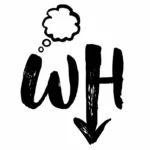What does Disney World and math class have in common? If you’re a WonderHere kids, lots! At WonderHere we know that relevant and meaningful learning is so important for making what they’re learning stick. The Create a Theme Park math project combines things all kids love-roller coasters, food, and creativity- with interesting math concepts. The level of engagement and creativity exhibited during this math project was off the charts!
The project starts off with a lot of brainstorming about all things theme park. These brainstorming activities really gets the kids excited for the rest of the project and their creative juices seriously flowing! Next, we move on to the really good stuff-rollercoasters! Post-Primary level kids will take a look at rollercoaster stats from around the world and use the information to compare numbers. Comprehensive level kids will use the same stats to calculate mean, median, and mode to help them analyze the statistics. The rollercoaster fun continues when they get the chance to design their own rollercoasters and other thrill rides. Math topics covered include measurement and determining scale. Once all the rides are conceptualized and measured, it’s time to figure out some fast passes. Telling time and calculating elapsed time become a lot more fun and relevant if it means not having to wait in line!
Arguably, the best part of the theme park experience is the food. Kids’ imaginations will run wild coming up with their own unique and creative restaurant and food ideas. From building menus and setting prices to calculating food income goals and determining profit margins there is a lot of serious real-world application happening in this next task. As an educator, it is so much fun to see how excited kids get while working through these tasks and the complete ownership they have over these ideas. In the final task, their ideas really come to fruition. It’s time to create their theme park. Spatial reasoning and critical thinking skills are put to the test as they map out the details of their theme parks. They cover it all, the big things like rides and restaurants, all the way down to trash cans and benches. When they’re done with this final task, they will have covered the math topics of area, perimeter, and writing and simplifying fractions.
While this math project is quite the undertaking (hello designing an entire theme park!) the kids enjoy the creative aspects and the ownership they are given throughout the whole project. The real-world applications help to tie in the learning of math concepts in a way that conveys meaning to children so they’re not left asking the age-old question of school children everywhere: when will I ever use this in real life?



